Art World
‘I Haven’t Felt This Optimistic for Quite Some Time’: Galleries Are Fleeing Manhattan for Upstate New York. Is It for Good?
The inaugural Upstate Art Weekend is kicking off tomorrow in the Hudson Valley.
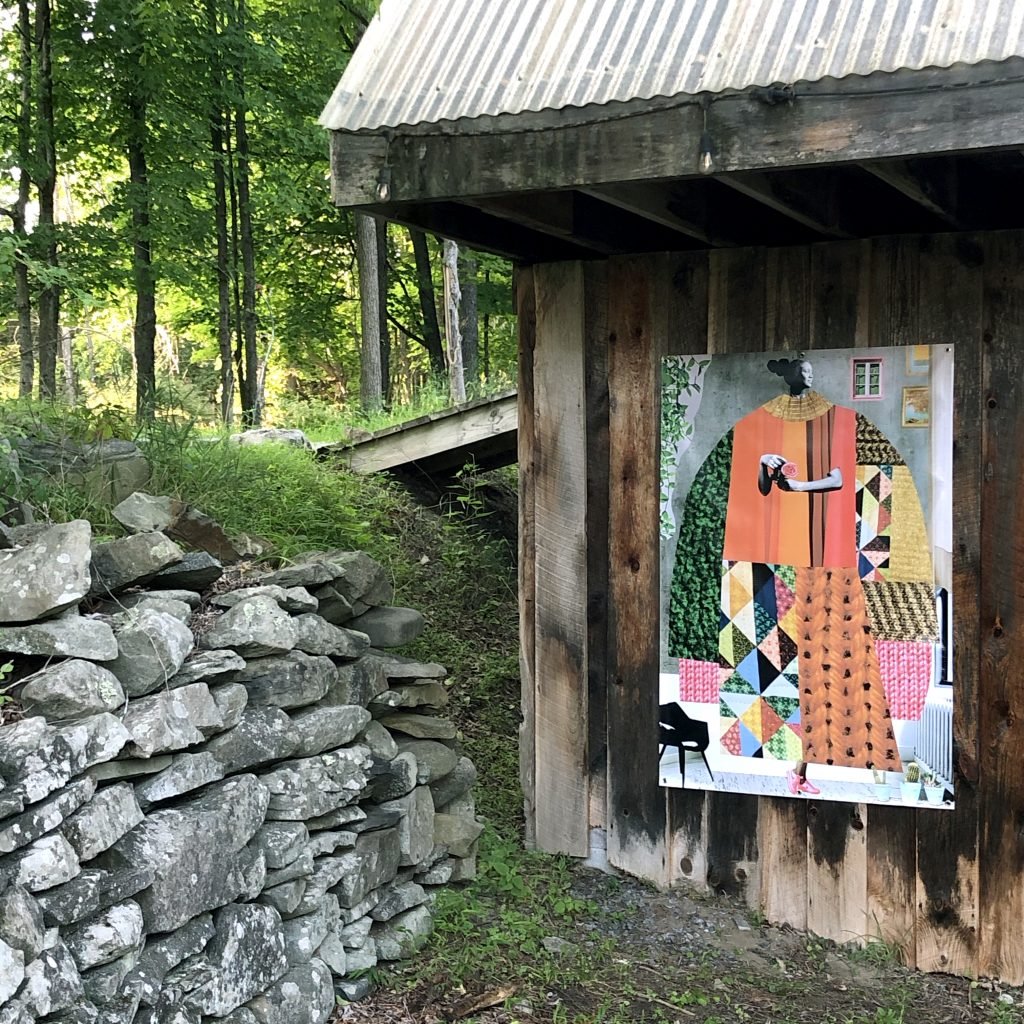
The inaugural Upstate Art Weekend is kicking off tomorrow in the Hudson Valley.

The art world often thinks it discovers a “new” place just because it has arrived there. I’ve certainly been guilty of heralding less-trodden cities as the “next frontier” (I’m sorry Luanda, I’m sorry!). So when I saw a round of discussions on Twitter about the Catskills becoming ground zero for the fleeing New York art world, I wasn’t surprised to see these gripes framed around class, and an implied colonization.
During this time of uncertainty that’s turned our personal and professional lives into an unknown lull, disrupted occasionally by chaos, many in the art world rolled a collective eye at the expansionism happening “out east,” in Long Island’s Hamptons. As one art insider recently told me, “certain dealers are unabashedly clear about why they’re in the Hamptons.” It strikes some as a bit gauche to “go where the money is” at a time when mega-galleries are laying off staff and others are closing altogether—not to mention the reckonings with racial and social justice being fought both with blood on the streets and in boardrooms and director’s offices.
And now many are wondering, has the Hudson Valley become yet another fairweather friend to New York City, a place to escape and exploit during hard times? Nearly a dozen galleries have opened shop upstate in the last two years, and that number has accelerated in recent months.
When asked about the recent momentum, one gallerist retorted, “‘Oh, am I just another rich art dealer who’s playing house upstate?’”
However you see it, there’s no denying the flurry of activity taking place upstate these days. Starting tomorrow, the Hudson Valley will play host to the first-ever Upstate Art Weekend, a cross-regional event where 30 participants will open their doors to display new shows and new ideas, from August 29 to 30 (mostly by appointment to comply with state health protocols, so book reservations now).
These days, against closed shutters in Manhattan, consensus tends toward “forget Tribeca, next stop Mt. Tremper!”—even if the moves are met with critique.
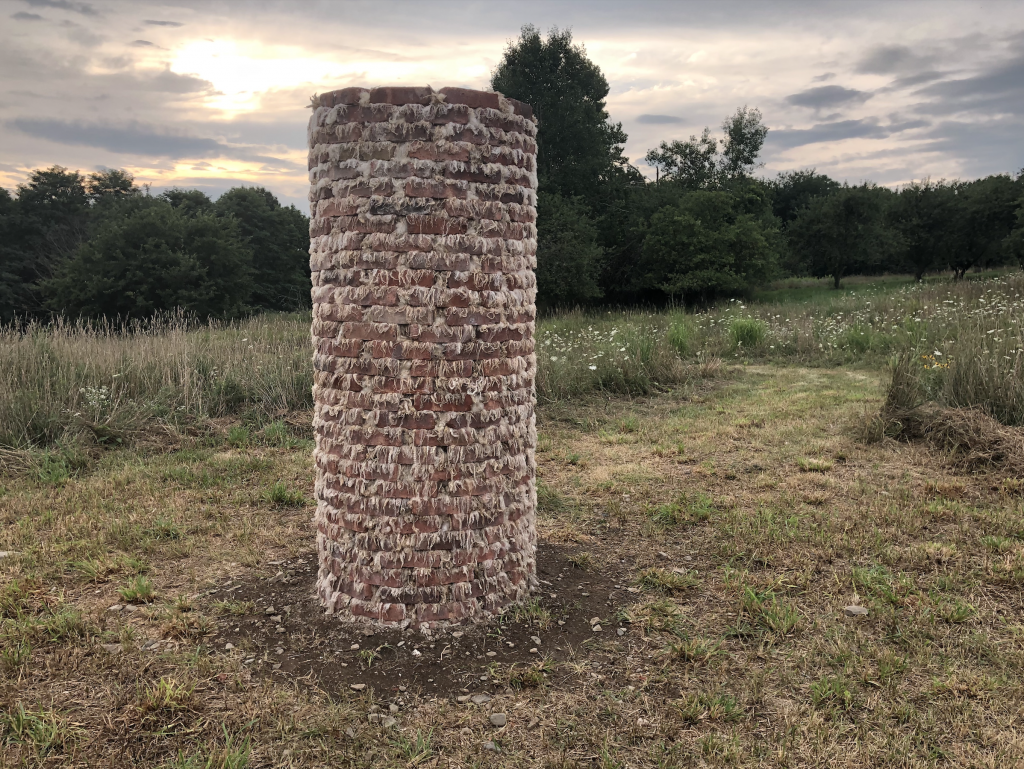
Alison McNulty, Ghost Column3 at PS21 in Chatham, New York.
Going up the Hudson isn’t exactly a Lewis-and-Clarke expedition, and it hasn’t been uncharted ground for quite some time. You probably already know about Philip Guston’s Woodstock artist colony, that Dan Colen lives in Pine Plains, and that Dia Beacon is a regular stop for the global art jetset.
I hear the callbacks: “Honey, you’re about 150 years too late to call this ‘a new art spot.’” Of course. Art history runs deep in the Hudson Valley. For those unfamiliar, a good place to start is with the mid-19th century Hudson River School, with Albert Bierstadt, Thomas Cole, and Frederick Church.
But come the 20th century, ideas and collectives emerged here that emphasized intentional, artistic living, making it a region steeped in countercultural modes and persuasion. It’s not surprising, then, that the Hudson Valley became associated with artistic colonies and residencies—the Hudson river crew’s favored Cragsmoor and Snedens Landing, and, later, Byrdcliffe and Woodstock Art Colony.
The tradition still holds nowadays with the Denniston Hill residency, co-founded by artist Julie Mehretu, and with Mildred’s Lane, run by artist Mark Dion and fashion designer Morgan Pruett. Institutions like Bard’s Lowman Center and Purchase College’s Neuberger Center have also held progressive, groundbreaking shows.
And there are still many living legends in the area: Brice Marden in Tivoli; Kiki Smith in Catskill; Larry Poons in Newburgh; Jasper Johns in Sharon, Connecticut; AL Steiner in Greene County; Mickalene Thomas in Salisbury, Connecticut; Arlene Shechet in Woodstock. The list is goes on.
There, too, is still debate about what the Hudson Valley region geographically covers. The New York suburb Westchester lays its claim, but so does Great Barrington, Massachusetts, and even places far west along the Delaware River position themselves within the Hudson’s reach. With any region there will be territorialism and city states—and those in Hudson have been known to scoff at folks in Beacon, who think they’re superior to those in Kingston, who think Dutchess County is full of snobs. (Cliques will clique, as the expression doesn’t quite go.)
Where there are cheap rents, close-knit circles, and creatives creating, there will be places to convene for art’s exhibition, admiration, and sale.
The Upstate Art Weekend is actually trying to connect these regional corners. A geographic stretch of over 80 miles—from Storm King in New Windsor, Foreland in Catskill, Ice House in Garrison, Art Omi in Ghent, and PS21 in Chatham—is all part of the weekend’s itinerary.
“I’m connecting with people and organizations who are established here,” says Helen Toomer, a former director of the Pulse art fair who launched the Upstate Art Weekend. “This isn’t a money-making venture for me, it’s about support, community, and I’m learning as I’m doing. I want to contribute to the economy and to the communities through annual programming and support of the arts.”
In 2016, Toomer purchased land in the Ashokan Reserve to open the Stoneleaf Retreat artist residency as an incubator to support women artists. For the Upstate Art Weekend, Stoneleaf will mount the works of past residents, including Sonia Louise Davis, Leah Dixon, Rebecca Reeve, Keisha Scarville, as well as host public programming by Yard Concept and the Female Design Council.
“I attribute being here and creating Upstate Art Weekend to the Lower East Side in the 2010s when you could rent a space and create a gallery and give it a go, without having any experience, just because you really wanted to,” Toomer says.
Legacy estates like Frederic Church’s Olana and Russel Wright’s Manitoga have also jumped on board for the event too, as have internationally revered institutions like Dia Beacon and Storm King.
“This collective creative capital is giving the Hudson Valley a reputation as an essential place to visit, explore, and invest in,” says John P. Stern, president of the Storm King Art Center, the outdoor sculpture garden that’s a leading presence in the region. The weekend of events “certainly underscores how much culture has grown in our area, the mutual support that organizations offer each other,” he says.
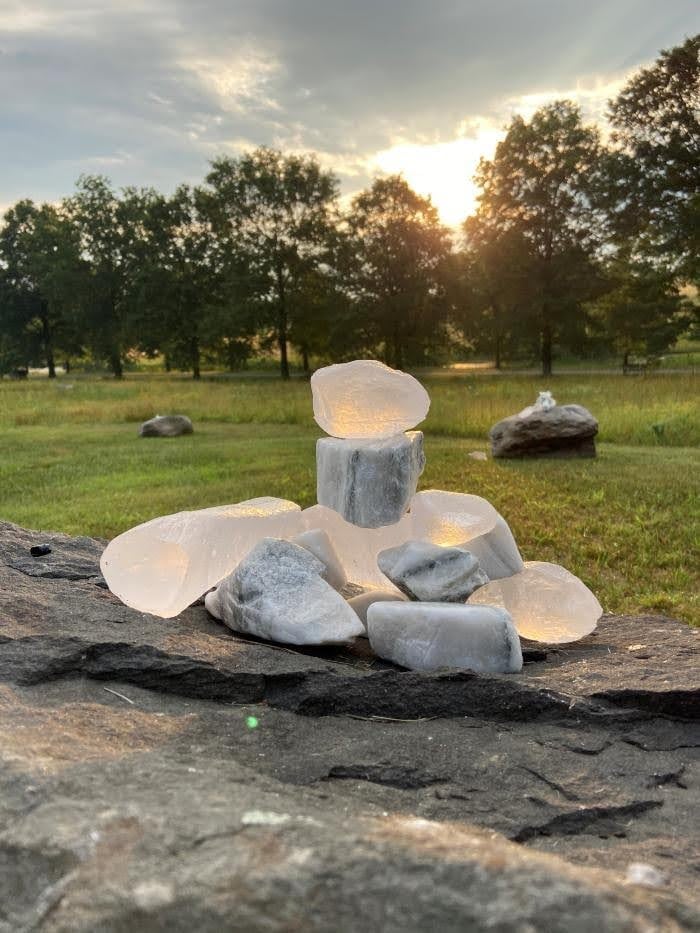
Martha Tuttle at Storm King Art Center.
It’s not difficult to figure out why artists are migrating north. Cheap rents and immense space are a proven formula, but so is freedom from the rat race of New York City.
Early upstate adopters like Kristen Dodge, whose September Gallery in Hudson opened in 2016 led the wave, and Zach Feuer, who, as director of Art Omi helped transform the quaint sculpture park into a necessary stop on any Hudson Valley art tour both cited similar reasons for their moves: to escape the pace of New York.
“I thought the art world was the most important thing in the world and I thought I was one of the most important people in it. Suddenly, there was this huge wake-up call,” Feuer told Artnews in 2018. “I didn’t want more anymore.”
Toomer echoed the sentiment: “I had been working 24/7 in the city for a decade. I was burnt out, and upstate was really the remedy.”
Alexander Gray, who is also participating in the weekend with his new upstate gallery, is following a similar path. The dealer operates a gallery on 26th Street, which represents artists Frank Bowling, Lorraine O’Grady, and Valeska Soares, and now he just opened a second space in Germantown, which is debuting with a show of work by the in-demand sound installation artist Jennie C. Jones.
“The pace of the art fair and travel schedule [in New York], it’s just grueling and unsustainable,” he says.
A resident of Germantown for the past eight years, Gray himself is from Woodstock, where he grew up in the summer school of Alexander Archipenko, the Cubist artist who married Gray’s mother. The idea for Gray’s new gallery arrived in the spring, in the midst of the lockdown, “so that our team could be around art and do something,” he says, but also because the real estate presented itself through an offer from a neighbor. It came as a result of “being in a community for a number of years,” he says. “It’s not just like [I’m] driving in from Chelsea saying, ‘I’m looking for a space.’ That’s what’s different in the Hudson Valley versus the Hamptons.”
A self-proclaimed “booster for the region,” Gray says he doesn’t have any particular market ambitions. “Where good artists are, what good artists respect and engage with, collectors and curators follow. That’s much more interesting because ultimately it’s artists who are the tastemakers.”
“I haven’t felt this optimistic about my work for quite some time,” Gray adds. Plus, he reminds us, “A year’s rent of this space compared to what our hotel bill in Basel would’ve been, the value prop is just a hotel?”
Candice Madey, whose New York City gallery On Stellar Rays closed in 2017, is now a homeowner in Kingston. In 2018, she teamed up with former Aldrich Museum director Alyson Baker to develop the River Valley Arts Collective, an itinerant platform that stages exhibitions, so far, at the ThornWillow Press in Newburgh, and Foreland, the former factory turned community hub in Catskill.
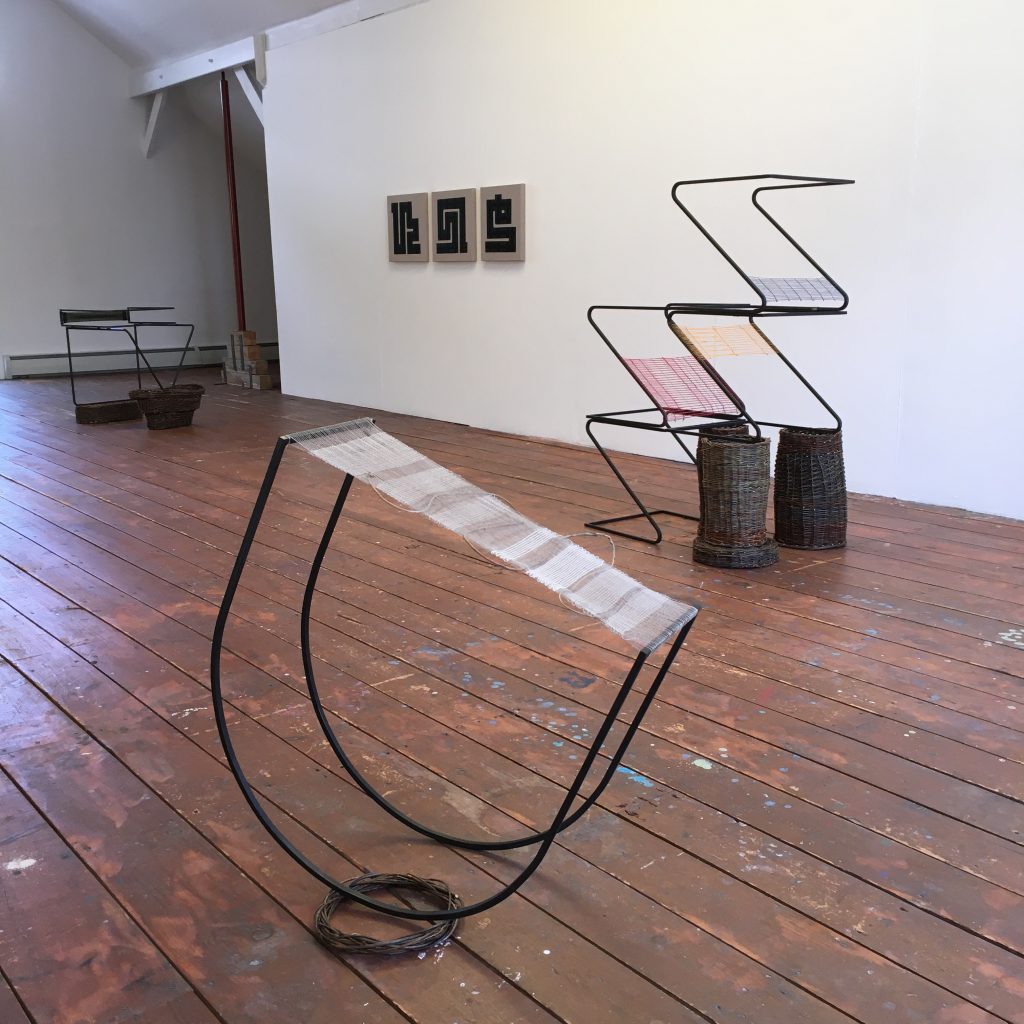
Laura Kaufman exhibition, organized by the River Valley Art Collective.
“River Valley is an opportunity for a new organization, a nonprofit whose mission is serving artists up here, to provide a nexus or hub for artists,” Madey says. “It is easy to feel isolated up here as well.”
The goal for the collective is to eventually have a permanent physical address filled with artists studios, meeting spots, and even food service as “a place for working and connecting,” she says.
This more engaged and humane approach to fostering community and driving artistic production is underscored by a shift in business values. “I don’t see this working with a perpetual growth model,” Madey says. “All the pressures of fairs and sales. I really have changed my thinking about how to operate.”
Toomer agrees: “The days of being hyper competitive or enforcing ‘protective’ barriers are shifting, as we all have to collaborate, support and uplift, otherwise there’s going to be nothing left to protect anyway.”
Last year, New York dealers Franklin Parrasch and Nicelle Beauchene found a former chopshop in Beacon, retitled it Parts and Labor, and decided on an “in conversation” programming model to pair mid-career artists with historically recognized ones. Currently, Lois Dodd’s intimate painted environs hang alongside Shara Hughes’s vibrant landscape spectrums.
“This type of model works well for us in the Hudson Valley as we don’t represent artists and have access to artists in the city through each of our own networks,” Beauchene says.
“There’s so much collecting energy, artist energy around here,” adds Parrasch. “I wouldn’t be shocked if you’d see a dozen or so galleries at this time next year.”
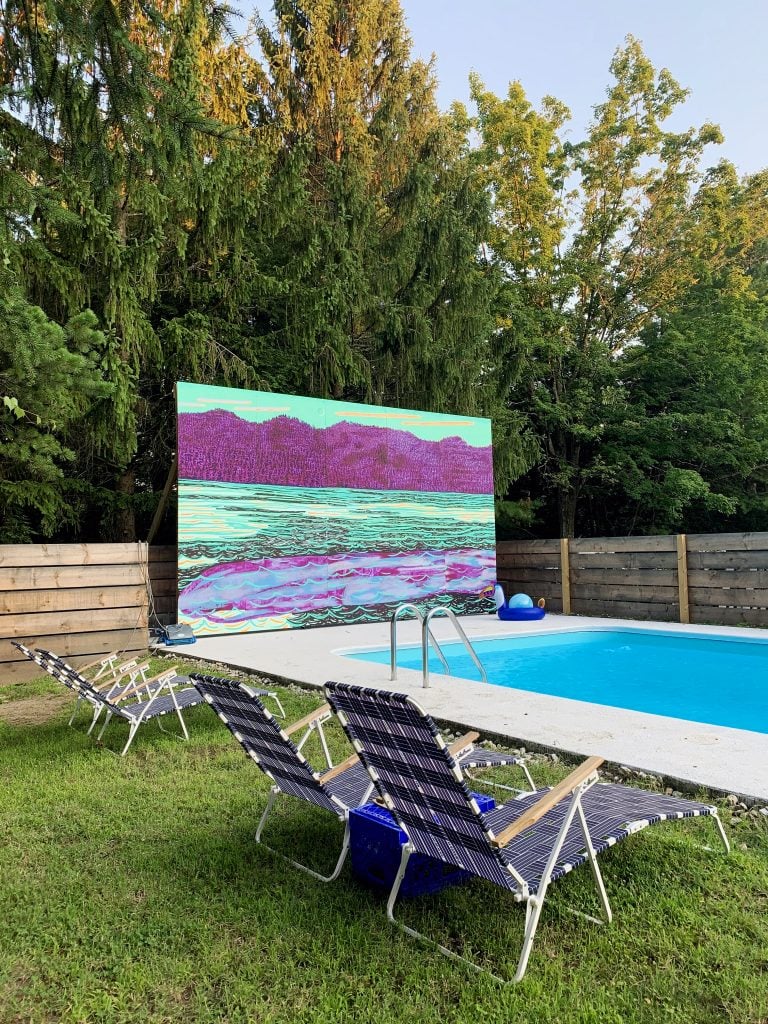
Hope Gangloff at the Starlite Motel.
There are, of course, galleries that have long called upstate home, and that aren’t tied to New York City—and not just nostalgic Hudson River School print shops. There were experimental galleries up here before New Yorkers decided that they, too, wanted in on the action. “This is our art world,” says former Brooklynite Julie Torres, who, along with her partner Ellen Letcher, inherited and expanded the LABspace, in Hillsdale, from artist Susan Jennings (who currently has a show up in Tanja Grunert’s apartment gallery in Hudson).
The ambitious artist-run space is currently hosting three simultaneous shows, including a solo exhibition of work by Susan Carr. “Instead of staying insular, focusing on local artists, or the opposite where artists are trucked into the city,” says Torres, “we’re trying to avoid both of those situations and bring artists from unexpected places, and who are underexposed in this area.”
Henry Klimowicz’s the Re Institute in Millerton, New York, has operated on the fringe of the Hudson Valley scene since 2009, exhibiting artists such as Judy Pfaff, Todd Chandler, and Letha Wilson. Klimowicz is currently showing one of the most thoughtful upstate shows, “Together in Isolation,” a series of buried lightboxes by more than 50 artists (with 40 more in the works) that are only viewed at night across his large farm property.
The Upstate Art Weekend puts these familiar and newcomer spaces on the same plane, and highlights the flurry of new activity, including Beauchene and Parrasch’s Parts and Labor in Beacon, Jayne Drost Johnson’s Ice House in Garrison, and enterprises by David Zwirner alums Elijah Wheat Showroom and Strongroom, both in Newburgh (and both exhibiting artist Azikiwe Mohammed).
The River Valley Arts Collective is unveiling its latest project, of Laura Kaufman’s material sculptures at the Al Feld Foundation (the first time the Ab-Ex artist’s compound has invited a contemporary artist to show); while the in-operation Starlite Motel, now run by partners in life and love Adriana Farmiga and Alix Umen, are showing new installations by Catskills fixtures Liz Collins, Jeffrey Gibson, and Hope Gangloff.
“This period of sociopolitical awakening has only amplified our intentions to bring focus to QTBIPOC voices and makers, so we’re in it deep, so to speak,” says Farmiga. “We have an idea that the motel can serve as a platform for the kind of community building and repair we urgently need. Especially upstate.”
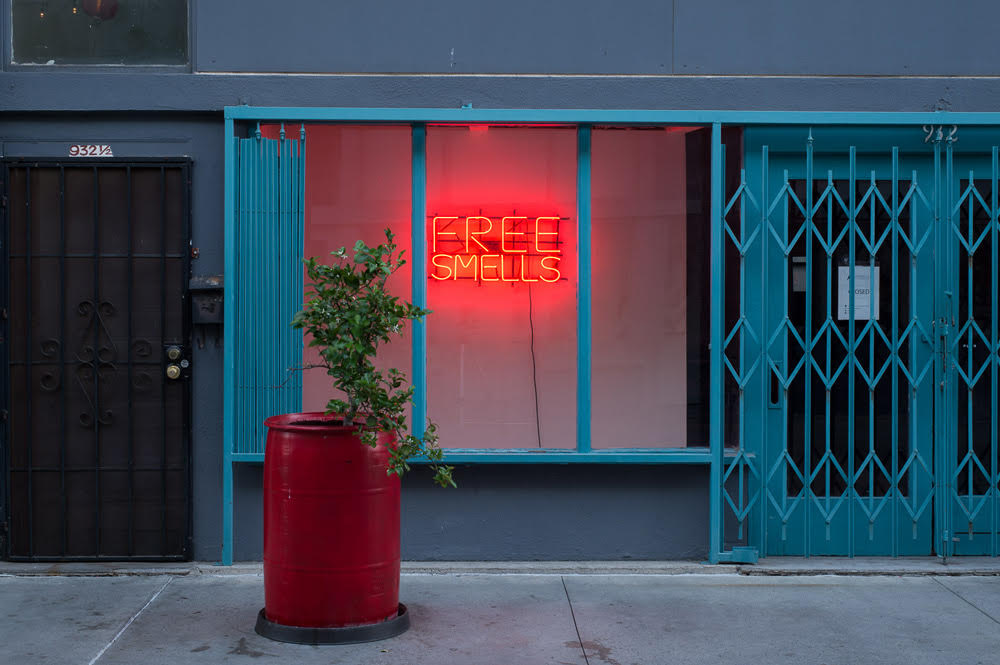
Erik Benjamin at Foreland in Catskill, New York.
So has the Hudson Valley finally emerged from New York City’s shadows? Can it shed comparison to its downstate neighbor? Does that even matter anymore?
“There’s a camaraderie here that, and I’m not saying anything negative about the city, I feel it stronger here than I did during those amazing days in Bushwick,” says Julie Torres.
But perhaps the Hudson Valley doesn’t depend on the gaze of the city anymore at all. “I don’t ascribe to the ‘city versus country’ mentality,” says Toomer. “They both cross-pollinate and feed each other.”
Upstate institutions are certainly recipients of larger visitor numbers because of downstate interest, however. “We have found that being apart from a city with a large arts economy has allowed for a level of experimentation that might not be as easy with those pressures,” said Art Omi executive director Ruth Adams in a statement. “We can take chances, such as giving pieces that were exhibited in a more traditional environment a whole new life.”
The recent surge of activity upstate also doesn’t mean its recent adopters have abandoned New (despite what many op-eds will tell you). Leah Dixon, a sculptor and proprietor of the recently shuttered Lowest East Side art bar Beverly’s, is taking her curatorial platform to Stoneleaf this weekend, but she assures me that Beverly’s will return in some form or another.
Beauchene, meanwhile, is reopening in Tribeca, and expect some news from Candice Madey about the next chapter of her Lower East Side presence.
So far, most dealers are keeping their New York spaces “as long as we can,” almost all of them said.
In a moment where rules need to be rewritten, and so much has changed, a feeling prevails that “New York Strong” runs up and down the Hudson, and the two regions need each other to thrive, not one more than the other.